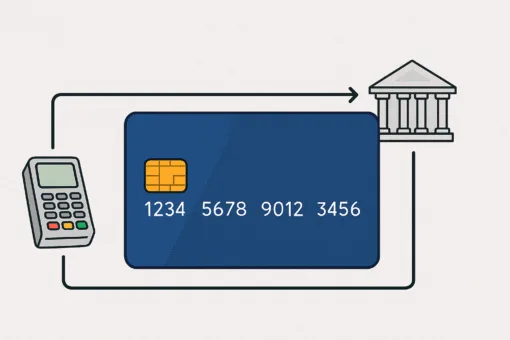Central Bank Digital Currencies (CBDCs) are increasingly shaping the future of money. They represent a digital form of a country’s official currency, issued and guaranteed by its central bank. Unlike decentralised cryptocurrencies such as Bitcoin, CBDCs are centralised, sovereign-backed and legal tender. Their rise is fuelled by declining use of cash, growing digitalisation of payments, and competition from private stablecoins and crypto.
For governments and central banks, CBDCs are not simply another payments technology. They touch on fundamental questions of monetary sovereignty, financial stability, and how economies are managed in the digital era.
How a Central Bank Digital Currency Works
A CBDC is essentially digital fiat currency. It carries the same value as notes and coins but exists only in electronic form. Unlike a bank deposit, it is a direct liability of the central bank, making it as risk-free as cash.
CBDCs can be implemented in different ways:
- Retail CBDCs – available to individuals and businesses for everyday payments.
- Wholesale CBDCs – restricted to financial institutions, used for interbank settlement and large-value transactions.
Within these models, several design choices matter:
- Account-based vs token-based: account-based CBDCs resemble today’s bank accounts, while token-based CBDCs behave more like digital cash that can be transferred peer-to-peer.
- Direct vs intermediated distribution: some proposals allow citizens to hold accounts directly with the central bank, while others rely on commercial banks or payment providers to distribute CBDCs.
- Programmability: advanced CBDCs could embed rules into money itself, allowing conditional payments or smart contract-style features.
Each choice has implications for privacy, efficiency, and the balance between public and private financial actors.
Benefits of CBDCs: Faster Payments and Financial Inclusion
The case for CBDCs is compelling in several areas.
Faster, cheaper payments
Domestic transactions could settle instantly, reducing reliance on intermediaries. Cross-border transfers, which currently involve multiple banks and high costs, could be simplified with direct CBDC-to-CBDC settlement, cutting delays and fees.
Financial inclusion
A mobile wallet holding CBDC could give unbanked citizens direct access to the financial system. In regions with weak banking infrastructure, CBDCs could reduce dependence on cash and informal networks, opening new opportunities for savings and digital commerce.
More precise monetary policy

CBDCs enable central banks to fine-tune money supply and even deliver targeted stimulus. During a crisis, governments could transfer CBDC directly to citizens’ wallets, bypassing intermediaries. Interest-bearing CBDCs, though controversial, could add another lever for policy.
Competition and resilience
As private digital payment solutions grow, CBDCs ensure public money remains part of the financial system. They act as a counterbalance to Big Tech payment platforms and maintain central bank relevance as cash use declines.
Security and efficiency
CBDCs could be more resilient to payment system failures if designed with distributed infrastructure. By reducing layers of intermediaries, they also cut operational costs and systemic risk.
Challenges and Trade-offs
CBDCs also raise complex questions.
Privacy concerns
The ability of central banks to monitor digital transactions raises fears of financial surveillance. Balancing anti-money laundering requirements with individual privacy will be one of the thorniest issues. Threshold anonymity, where small transactions remain private, is being tested as a compromise.
Disruption to banks
If citizens can hold CBDC directly, they might withdraw deposits from commercial banks. This could raise funding costs and reshape the business model of retail banking. Policymakers are debating caps on CBDC holdings or non-interest designs to prevent destabilisation.
Cybersecurity and scalability

A CBDC must handle billions of transactions with near-perfect resilience against cyberattacks. Any breach could undermine trust in the currency and the central bank itself. Building such systems securely is non-trivial.
Cross-border coordination
Without interoperability, CBDCs risk creating new silos. Multi-CBDC corridor projects are exploring how different national CBDCs can transact seamlessly. Success will depend on common standards and international agreements.
Economic design dilemmas
Should CBDCs pay interest? Would they replace cash or complement it? Should programmable features be allowed, and if so, under what governance? Each decision carries trade-offs between innovation, control, and stability.
CBDC vs Stablecoin vs Cryptocurrency
| Feature | CBDC | Stablecoin | Crypto (e.g., BTC) |
|---|---|---|---|
| Issuer | Central bank (sovereign) | Private company/DAO with reserves | None (protocol/network) |
| Legal status | Legal tender | Depends on jurisdiction | Not legal tender (generally) |
| Price stability | Par to domestic currency | Pegged to fiat; issuer/reserve risk | Market-driven, volatile |
| Use case focus | Retail & wholesale payments, policy tools | On-chain payments, settlement | Store of value/speculation |
| Privacy | Policy-defined; threshold anonymity possible | Issuer & chain dependent | Pseudonymous, fully public ledger |
| Banking impact | Potential deposit outflows; mitigations via caps/non-interest | Competes with payment rails | Limited direct impact on deposits |
CBDCs combine the authority of traditional money with digital convenience. Stablecoins and cryptocurrencies, by contrast, operate outside government control. The competition between these three categories is shaping the future of global payments.
Global CBDC Progress
The landscape is diverse:
- China: the digital yuan (e-CNY) is the most advanced large-scale CBDC. Pilots cover millions of users and multiple regions.
- Bahamas: launched the Sand Dollar, the world’s first fully operational retail CBDC.
- Nigeria: introduced the eNaira in 2021, though adoption has been slower than expected.
- European Union: the ECB is investigating a digital euro, with prototypes under way.
- United States: the Federal Reserve has focused on research, cautious about impacts on banking.
- Caribbean & Latin America: multiple countries are piloting CBDCs to enhance financial inclusion and reduce reliance on cash.
According to the Bank for International Settlements, more than 90% of central banks are exploring CBDCs. While approaches vary, the trend is global and accelerating.
Design Choices That Matter

CBDCs are not one-size-fits-all. Central banks are testing different configurations:
- Retail vs wholesale: retail CBDCs aim at consumer use; wholesale CBDCs target settlement between banks.
- Token vs account: tokens resemble cash; accounts mirror bank deposits.
- Direct vs intermediated: some models give citizens direct central bank accounts; others use commercial banks as intermediaries.
- Interest-bearing or not: interest could make CBDCs a tool for monetary policy but might destabilise bank deposits.
- Privacy thresholds: small payments may be anonymous; large ones require full compliance.
- Technology base: some CBDCs use distributed ledgers, others rely on centralised databases.
These design choices determine how CBDCs interact with existing financial systems and how disruptive they may be.
Geopolitics and the Global Role of CBDCs
CBDCs are not just about domestic payments, they have strategic implications.
- Dollar dominance: some view CBDCs as a tool for challenging the global role of the US dollar. China’s e-CNY could give it influence in cross-border trade.
- Emerging markets: CBDCs could reduce reliance on correspondent banks for remittances, lowering costs for workers sending money home.
- Currency competition: CBDCs may compete with stablecoins and Big Tech payment systems. For governments, issuing a CBDC helps retain control in a shifting landscape.
- Financial diplomacy: multi-CBDC arrangements could reshape regional payment blocs, strengthening economic integration.
The Road Ahead

CBDCs will not replace existing money overnight. Instead, they will coexist with cash, deposits, stablecoins, and cryptocurrencies. Their adoption will be gradual, influenced by regulation, technology, and public trust.
Key themes to watch:
- Interoperability: whether CBDCs can transact seamlessly across borders.
- Policy frameworks: privacy, data use, and limits on holdings will be critical.
- Programmability: programmable features could unlock new applications, but governance will be key.
- Resilience: secure infrastructure must underpin trust in CBDCs.
- Coexistence: CBDCs are likely to complement, not replace, bank deposits and private payment systems.
Conclusion
CBDCs are one of the most significant innovations in the history of money. They merge the trust of state-backed fiat with the efficiency and possibilities of digital technology. Properly designed, they could improve financial inclusion, make payments faster and cheaper, and give central banks new tools for stability.
But they are also fraught with risks. Privacy, banking disruption, cybersecurity, and geopolitics. The choices governments make in designing CBDCs will determine whether they strengthen financial systems or create new vulnerabilities.
What is clear is that CBDCs are not a passing trend. From China’s digital yuan to the ECB’s digital euro, the momentum is global. As nations experiment, refine, and eventually deploy digital currencies, the very foundations of money and payments will continue to evolve.
CBDCs represent both opportunity and challenge: a chance to reshape finance for the digital age, but only if designed with care, transparency, and trust.
















